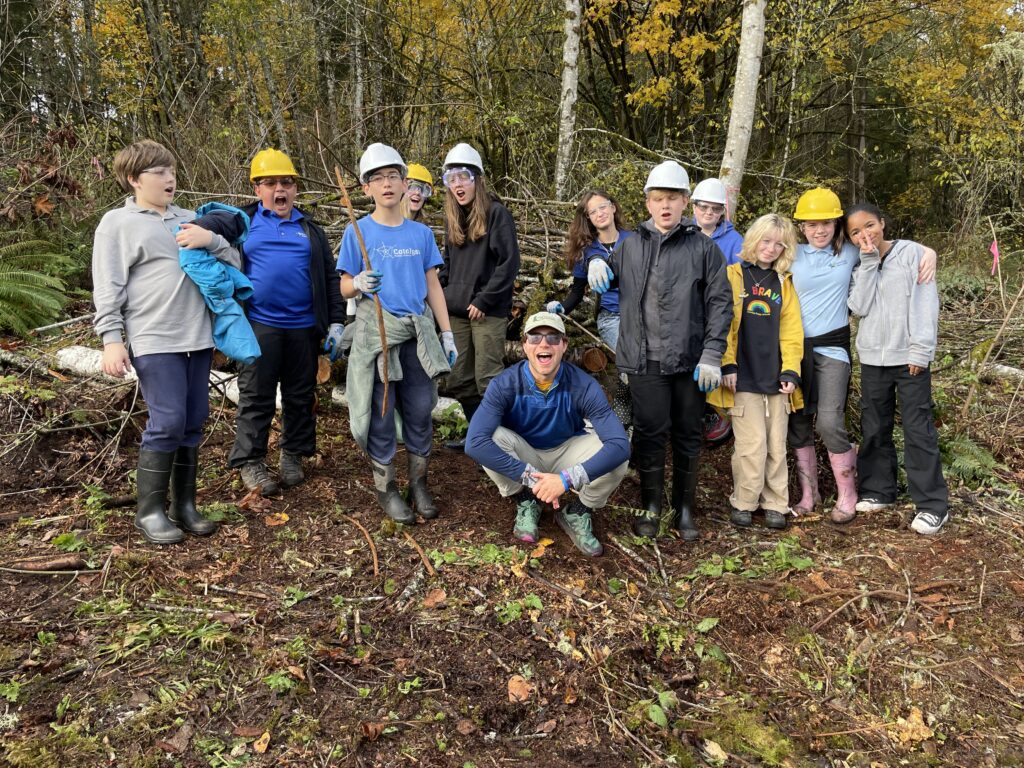On several crisp fall mornings this November, eager students trudged through fallen leaves of big leaf maples to identify tree species at Grovers Creek Preserve. Under the towering evergreens of the GPC-managed preserve, they noticed the discrepancy in the number of species between plots just a few hundred feet apart. While one plot boasted five or six different kinds of trees, areas that had previously been owned by a timber company had just one: Douglas fir.
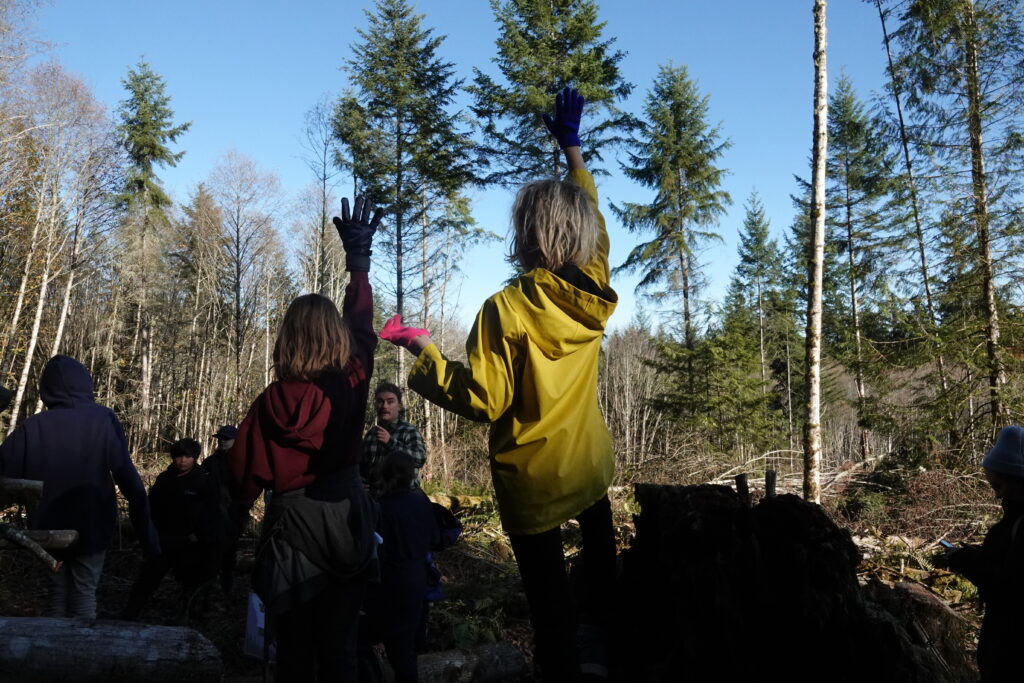
These observations set the stage for the rest of the field experience. Throughout the day, students pondered questions about biodiversity and forest stewardship. Why is biodiversity important? How can stewards support climate resilient forests?
Great Peninsula Conservancy’s dedicated team of staff and volunteers facilitated hands-on lessons to support students navigating new terrain while discovering a love of the natural world through environmental education. Over the course of five field days and 18 classroom visits, GPC’s Land Labs program reached 230 students this fall: our most expansive Land Labs yet! Students came from four schools across the Kitsap Peninsula: Poulsbo Middle School, Choice Academy, Mountain View Middle School, and Catalyst Public Schools. Ranging from fifth grade through high school, students’ intrigue didn’t falter; they were thrilled to get outside and learn about the natural environment in their community.
Among 329 acres of forest, streams, and wetlands, Grovers Creek Preserve is home to more than 60 bird species and a grove of 200-year-old Sitka spruce, hemlock, cedar, and fir trees. However, some sections of the preserve are former working forests and mostly contain densely planted Douglas fir. This contrast offers a prime example of the importance of ecological forest stewardship. Students learned about forest management practices used to restore biodiversity after these monocultures became part of the preserve.
Classes were split into small groups for a more intimate learning experience, and each time a group passed another they would hide behind leaves and sticks, pretending to be camouflaged. Giggles and silliness resulted, bringing students joy as they moved through the preserve.
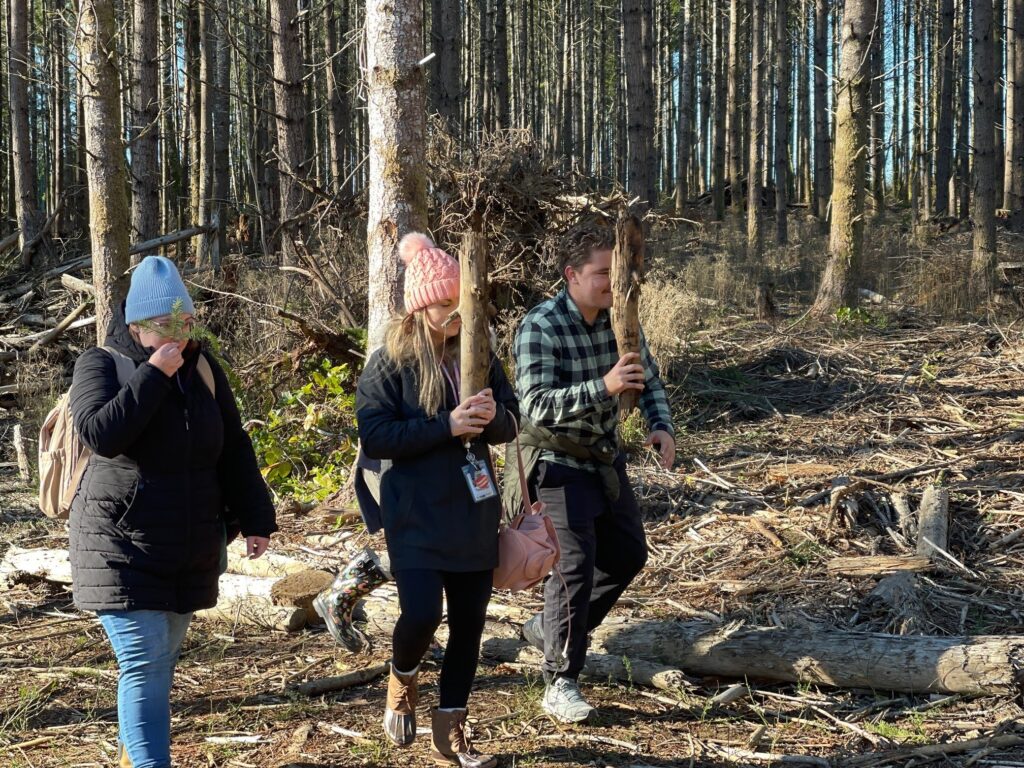
With bellies full after a lunch break, students traveled between four stations about forest management. They learned about patch cuts, thinning, and snags by comparing sections of the preserve that were directly next to each other but looked drastically different. They helped build habitat piles to support local wildlife. They learned field research methods using tools like Audio Moths, DBH tape, and wildlife cameras. Finally, they got to participate in a favorite activity: invasives removal.
The energy was high as students used loppers and weed wrenches to clear fast-growing Scotch broom from the sides of the road. “For the trees!” they yelled, while working as a team to remove the overpowering shrubs that were crowding out space needed by young native firs to survive. Adults and kids alike found joy in seeing the direct impact of their work: watching baby firs see sunshine again after removing surrounding weeds.

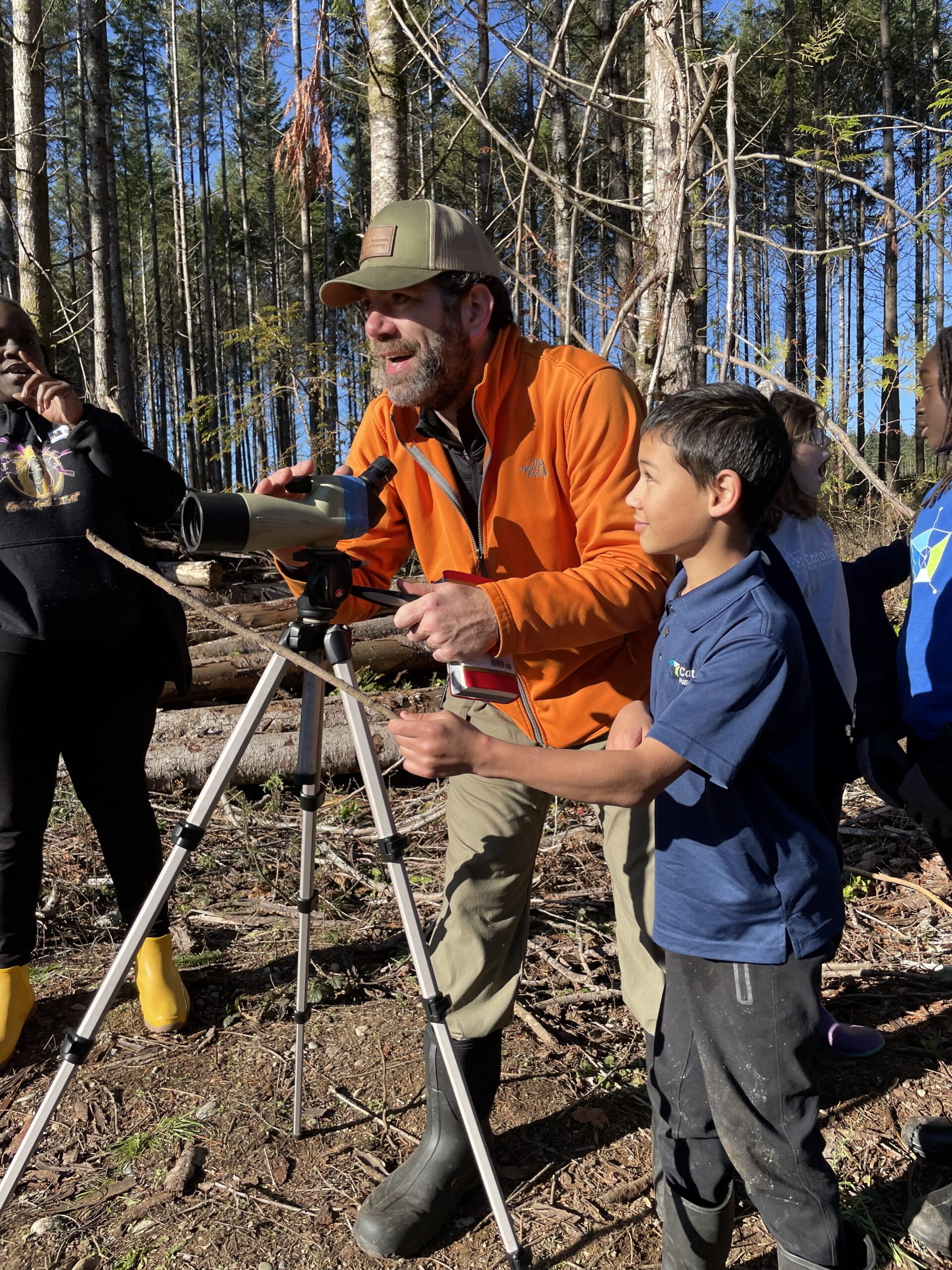

Winding down at the end of the field day, some students were lucky enough to see an eagle flying overhead, awestruck by its impressive wingspan and graceful soar. Others absorbed the last of the natural silence of Grovers Creek Preserve, far from the noise pollution of local roadways. Areas like this are increasingly hard to find due to rapid development and deforestation across our region. Teaching youth about resilience to an inevitably warming climate allows them to see themselves as a part of the solution. Through these meaningful connections to nature, Land Labs shows students that STEM careers are very attainable; they, too, can be forest stewards, scientists, and activists.
“Sharing a sense of wonder and curiosity about the outdoors that bring out sheepish grins and boisterous joy in students are some of the highlights for me.” recounted Ben Crooke, an AmeriCorps VISTA Conservation Education Fellow at GPC.
GPC’s Community Engagement Coordinator, Gabriel Newton, observed the complete mindset shift before and after the Land Labs field trips. Students who had struggled in indoor classroom settings thrived when they had the chance to learn outdoors. “The outdoor classroom is so powerful for so many kids.” said Newton.
One student who was initially discouraged when they learned that GPC cut down trees, believing that trees should be left untouched, finished with a new understanding of conservation; sometimes, removing trees helps boost biodiversity and gives forests tools to survive. As they were leaving the preserve to hop on a bus back to school, they told Newton that they wanted to protect forests for a living.
Plenty of other students raved about how much they loved removing Scotch broom. “I could do this all day!” they said.
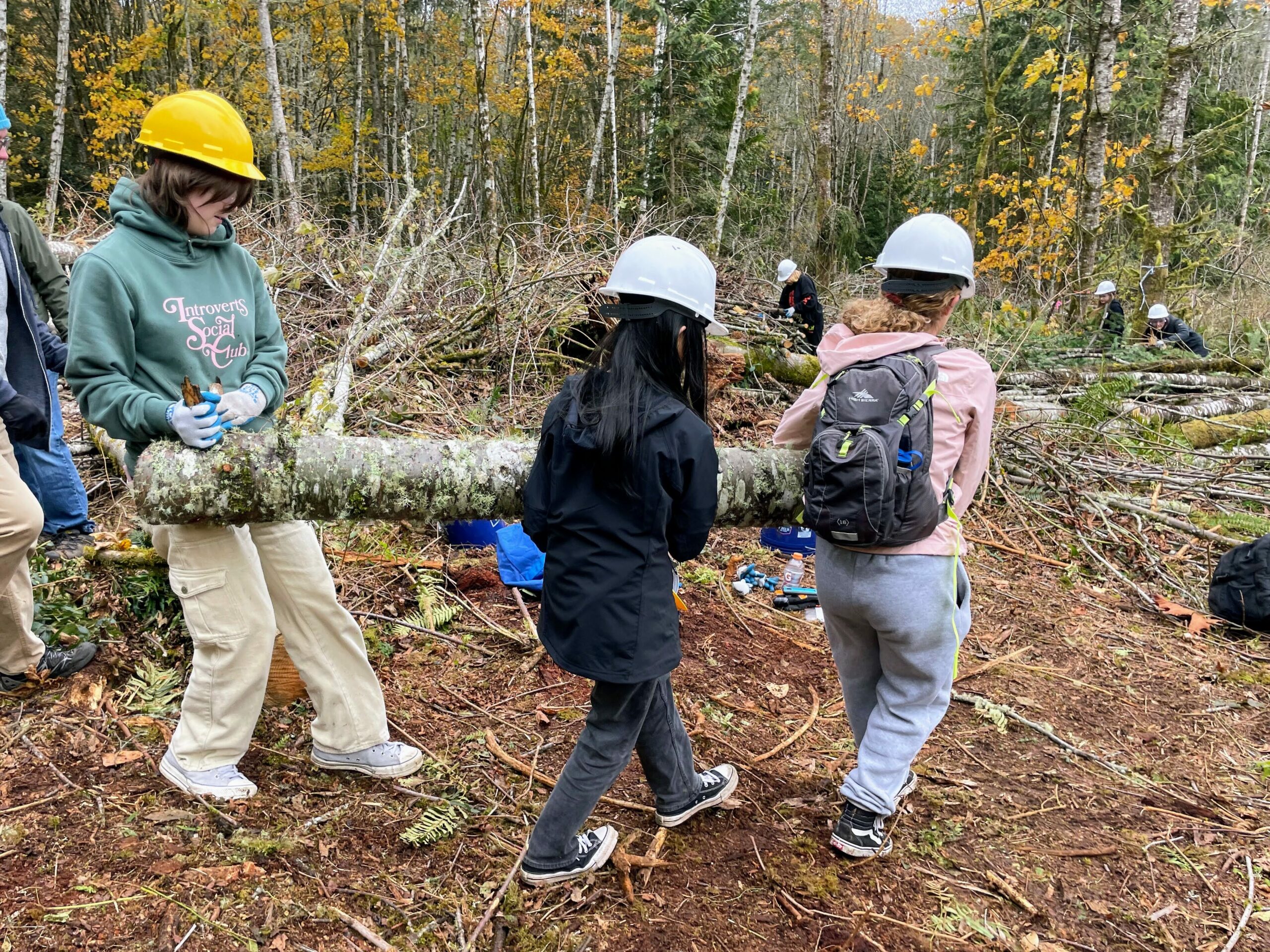
These early experiences in nature are what foster conscious environmental stewards. Land Labs’ hands-on experiences allow students to explore careers in STEM through days spent outside helping local ecosystems thrive.
GPC’s Land Labs team will spend the next few months preparing for our spring Land Labs, which will take place at Curley Creek Preserve. To find out more or get involved as a volunteer, please contact us at landlabs@greatpeninsula.org or sign up here!
